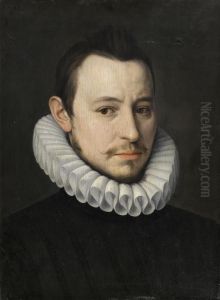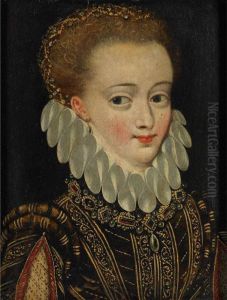Jean Decourt Paintings
Jean Decourt, also known as Jean de Court or Jehan Decourt, was a French painter and miniaturist active during the Renaissance period, specifically in the 16th century. While exact details of his birth and death are somewhat unclear, it is generally believed that he was born around 1530 and died around 1585. Decourt's life and work are significant for his contributions to the courtly styles of portraiture and his role within the artistic circles of his time.
Decourt's career is notably marked by his association with the Valois court in France, where he served as a painter to the king. His work primarily consisted of portraits, which were highly valued for their detail and the insight they provided into the fashions and personalities of the French nobility and royalty of the time. He is often credited with being the official painter for King Charles IX of France and is known to have worked for other members of the royal family, including Catherine de' Medici, the queen mother, and her children. This position allowed him to play a crucial role in documenting the appearances and attire of the French elite, contributing significantly to our understanding of the period's cultural and social nuances.
One of his most recognized contributions to the art world is his portrait of Charles IX of France, which exemplifies the intricate style and attention to detail characteristic of his work. However, much of Decourt's work has not survived, or its attribution remains uncertain, making a comprehensive assessment of his oeuvre challenging. Despite this, his known works demonstrate a mastery of miniature painting and portraiture, with a particular ability to capture the elegance and dignity of his subjects.
Decourt's style is reflective of the broader trends in French Renaissance art, which was increasingly influenced by Italian models of portraiture and the humanist ideals of the time. His portraits are noted for their realism, sophisticated use of color, and the detailed rendering of textiles and jewelry, which offer a window into the fashions of the French court. Beyond his portraiture, little is known about other aspects of his artistic output, suggesting that his primary and most impactful contributions were in the realm of court portraiture.
Despite the limited information on his life and the survival of his works, Jean Decourt remains an important figure in the study of French Renaissance art. His portraits not only provide valuable historical insights but also reflect the artistic and cultural trends of 16th-century France, underscoring the significant role of court artists in shaping the visual legacy of their time.

